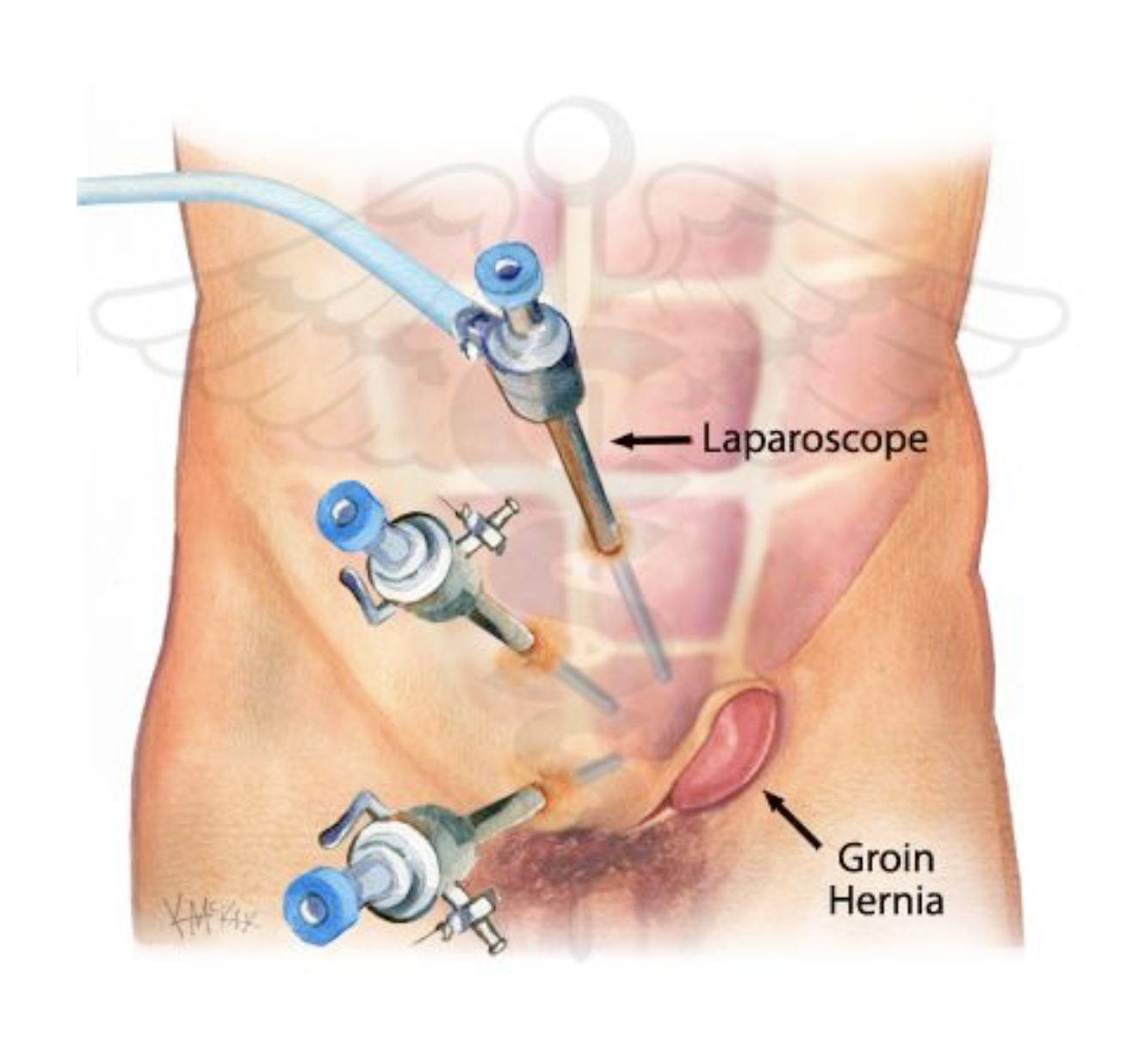
An Inguinal hernia is a very common problem faced by a large number of people. Regarding the treatment, there is no confusion that surgery is the only option. But patients have a lot of doubts and questions about the kind of surgery they should opt for, Open surgery or a laparoscopic hernia surgery? Here we shall talk in detail about the pros and cons of both the methods. So that you can choose the best surgical options that suit your condition.
An Inguinal hernia is a defect in the groin muscles, through which the contents of your tummy come out under your skin, leading to a bulge. It is seen more commonly in males of all age groups, kids, young adults, and the elderly. The blood vessels carry blood to your testes and the tube carrying sperms from your testes passes through a hole in your groin muscles. This natural hole is a site of potential weakness.
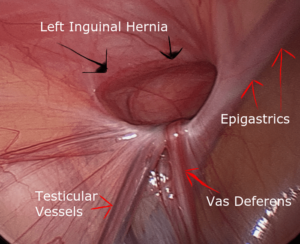
Because of various reasons, this hole enlarges creating a defect. Your intestines can come out of your tummy through this defect and rest below the skin. This creates a bulge. Initially, it is small and happens only when the pressure in your tummy increases, like when you are coughing, lifting weight, passing motion, or urine. It can cause pain and discomfort in walking, running, and other activities. Many a time it is painless.
With time this defect enlarges, and then it becomes easier for the intestines to come ours even without any force. Hence, the bulge appears whenever one is standing or walking and goes back while sleeping. If you still do not get it fixed by surgery, then it enlarges even more and the intestines remain out all the time. In such cases, the bulge goes almost up to the bottom of your scrotum (the bag that contains the testes). Usually, as it enlarges the pain and discomfort increase.
It is still not uncommon to see some very large hernias where patients do not feel discomfort. Most of the time it is due to the acceptance of the discomfort and activity restriction by the patient. This acceptance is due to the subconscious tendency of delaying the surgery as much as possible. But we should understand that the surgery is technically difficult and the results become inferior when the hernia is very large. Hence, except for a very old person who is not expected to live more than a few years, there is no point in delaying surgery. It is certainly better to fix it when it is small and get the best outcome.
Also, our main concern is a situation called strangulation and obstruction. It happens when the intestine gets stuck in the defect causing gangrene of the intestine. Although this is a very rare complication, it needs emergency surgery. If we act fast when it gets stuck and operate before the intestine develops gangrene, the outcomes are still good. But if we get late in doing surgery at such time, we would need to remove the part of the intestine, which has developed gangrene. And the surgery becomes a more serious matter than a routine hernia surgery. We can easily avoid it with timely action.
Surgery is the only treatment option for Inguinal hernia. But we do have options for surgery. The surgical options include open surgery and laparoscopic surgery. During surgery, the surgeon repairs the defect in the muscles so that the intestine will no longer be able to come out. During most of hernia surgeries, we use a mesh, to support the repair of the muscle defect.
Inguinal hernia surgery can be done even without a mesh, but the recurrence in such surgery is high. For this reason, we do not recommend a hernia surgery without a mesh in today’s time. Mesh gives added strength to the repair so that the chances of hernia occurring again reduce significantly. The only exception to this is hernia surgery in a kid. We do not use a mesh in hernia surgery for a kid.
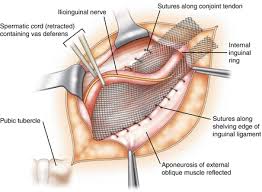
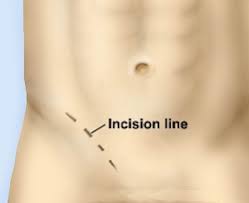
Open surgery is the traditional surgery, which needs an incision of about 8-10 cms size in the groin region. When done properly it gives very good results. It can be done in general, spinal as well as local anaesthesia. Open Inguinal hernia surgery is routinely done by almost all surgeons, is safe and widely available. Let us discuss in brief some advantages and disadvantages of this method.
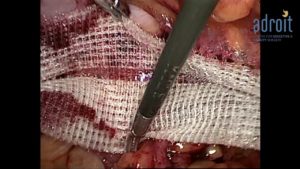
Laparoscopic Inguinal hernia surgery is done through very small keyhole incisions. Usually three in number, one of which is of 1 cm and other two of 0.5 cm size. Although patient recovery is very fast and smooth, the surgery per se is technically very demanding. This is the reason that it is not as widely available as open surgery.
It is superior to open surgery, both in terms of strength of the repair and post-surgery pain-free activity. But it needs proper surgical expertise and skills, else it may lead to poorer outcomes.

 Advantages
AdvantagesSome of the patient’s factors do influence the choice of surgery. Laparoscopic surgery is certainly superior for Inguinal hernia repair. But this advantage is negated by the risk of general anaesthesia-related complications in a select group of patients. For these patients, open surgery is preferred as it can be done under local anaesthesia.
The patient factors include:
Many hernia-related factors are important in deciding the type of hernia surgery. Certain factors make open surgery more favourable while others make laparoscopy more favourable.
Laparoscopic inguinal hernia surgery is certainly a better option compared to open surgery. It has clear advantages in terms of less pain, faster recovery and early return to normal activities. This advantage is more significant in younger patients and when the hernia is on both sides.
A small subset of patients may be more suited for open surgery. These include patients having high-risk factors for general anaesthesia like major heart, lung, liver or kidney problems. For all such patients, open surgery under local anaesthesia is much more safer. Also, those having a very large hernia and a recurrent hernia after a previous laparoscopic surgery may be more suited for open surgery.